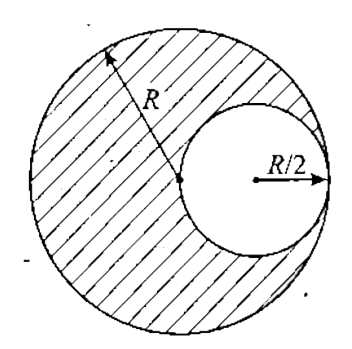X-ray crystallography reveals many aspects of the structure of metal halldes. The radius ratio (r+/r−) is a useful parameter to rationalize their structure and stability. A table or radius ratio (r+/r−) for some alkali halide is given below :


For a given anion, the graph for NaCl type structure levels off at low r+/r− values because of :
cation - cation contact along the face diagonal
anion - anion contact along the face diagonal
cation - anion contact along the cell edge
None of the above
The correct Answer is:B
Topper's Solved these Questions
- SOLID STATEBOOK - FIITJEECHAPTER - SOLID STATEEXERCISE - (MATRIX - MATCH THE FOLLOWING QUESTIONS)
3 Videos
- SOLID STATEBOOK - FIITJEECHAPTER - SOLID STATEEXERCISE - (MATCHING LIST TYPE QUESTIONS)
3 Videos
- SOLID STATEBOOK - FIITJEECHAPTER - SOLID STATEEXERCISE - (COMPREHENSION - II)
4 Videos
- QUALITATIVE ANALYSIS BOOK - FIITJEECHAPTER - QUALITATIVE ANALYSIS EXERCISE - Single interger answer type
3 Videos
- STOICHIOMETRY AND BALANCING REDOX REACTION BOOK - FIITJEECHAPTER - STOICHIOMETRY AND BALANCING REDOX REACTION EXERCISE - SINGLE INTEGER ANSWER TYPE QUESTIONS
5 Videos
Similar Questions
Knowledge Check
X-ray crystallography reveals many aspects of the structure of metal halldes. The radius ratio (r+/r−) is a useful parameter to rationalize their structure and stability. A table or radius ratio (r+/r−) for some alkali halide is given below :


Which among the halides LiBr, NaBr and RbBr is likely to undergo phase transition from NaCl type of CsCl type structure with change of temperature and/or pressure ?ALiBrBNaBrCRbBrDNone of the aboveA salt AB cystallises in the CsCl structure. The anions at the corners and the cation in the centre. Hence, radius ratio r+/r−
A0.225B0.441C0.625D0.732The reaction sequence given below gives product R.

The structure of the product R isA B
B C
C D
D
From the circular disc of radius 4R two small discs of radius R are cut off. The centre of mass of the new structure will be at

View SolutionThe reaction sequence given below gives products R.

The structure of the product R is
View SolutionFrom the circular disc of radius 4R two small discs of radius R are cut off. The centre of mass of the new structure will be at

View SolutionIn zinc blende structure anions are arranged in ccp and cations are present in the tetrachedral voids and only half the tetrahedral voids are occupied,
for this type of structure , radius ratio r/r should be in the range
View SolutionKCl crystallizes in the same type of lattice as does NaCl. Given that rNa+/rCl−=0.55 and rK+/rCl−=0.74. Calculate the ratio of the side of the unit cell of KCl to that of NaCl.
View Solution
